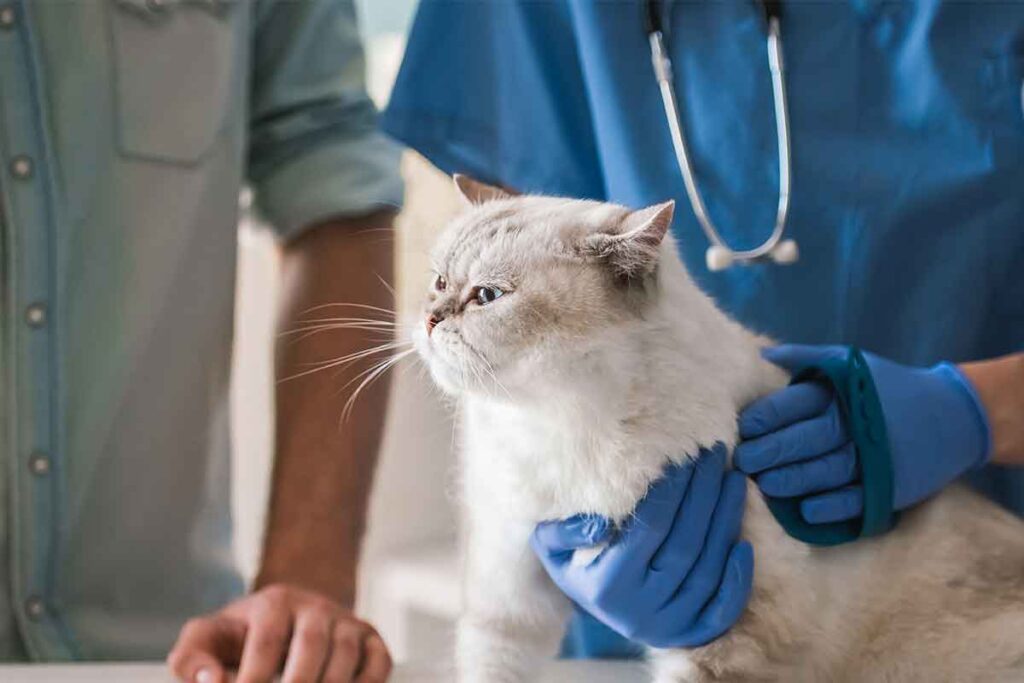By Kim Campbell ThorntonDo you talk to your clients about whether their pets are in pain? It can be a difficult subject to discuss, in many instances because it just doesn’t come up. Sometimes pet owners overlook subtle changes in behavior that can indicate pain or assume that those changes are a normal by-product of aging. You may need to bring up the subject yourself, especially if you are seeing a senior pet or one who resists examination.
“I wish we would talk more about it,” says Joyce A. Login, DVM, Zoetis senior manager of veterinary specialty operations. “Sometimes I think we don’t bring it up in the room as much as we could. It’s a challenge.”
As a veterinarian you are trained to see and feel changes in pets that owners might not, such as abnormal postural displays or heat on a specific joint, but listening to what people say about their pets’ behavior and drawing out details with questions is an important part of the exam process.
“We can help the owner when we’re asking history and possibly pull out some information in how we ask our questions,” Dr. Login says.
Some of the following obvious and not-so-obvious statements you might hear from owners can open up a discussion:
–He doesn’t like it when I touch him there.
–She doesn’t always use her litter box anymore.
–He used to enjoy being picked up but now he squirms away.
–She’s started pooping inside the house even though she has a dog door.
–We used to go on long walks, but now he conks out after a mile.
–She’s reluctant to go up or down the stairs.
–He doesn’t jump on the bed or sofa anymore
–She used to love the kids and now she walks away when they want to pet her.
–He doesn’t groom himself very well anymore.
–She sleeps in the closet instead of hanging out with us while we watch TV.
Changes in litter pan behavior are much more likely to indicate that a cat has pain issues rather than a urinary tract infection. Dogs who defecate outdoors and then defecate again in the house may be doing so because it’s painful for them to squat for very long so they don’t complete the act outdoors. Animals who potty inside the home even though they have a pet door may find it painful to go through the door because it whacks them on an already aching hind end as they exit.
The real red flag is resistance to touch, says Robin Downing, DVM, DAAPM, DACVSMR, at Downing Center for Animal Pain Management in Windsor, Colorado.
“While animals cannot and do not anticipate or fear their own death, they very much anticipate and fear pain,” she says. “As a consequence, when we as veterinarians meet and interact with dogs, and particularly cats, who are reluctant for us to handle them, the most likely explanation is that those animals are painful and they know that when a human touches them it hurts, so they are anticipating and fearing that pain and doing everything they can to prevent being handled.”
Before performing a pain palpation, she demonstrates the amount of pressure she’ll be using on an owner’s forearm, so the person recognizes that it’s not a painful level of touch.
Finding that what they thought were breaks in normal behavior—not socializing, not wanting to be touched or picked up, losing housetraining or litter box training—signal that an animal is in pain can be an eye-opener for owners. Some break down in tears when they realize their pet has been hurting.
“We have a clientele who believe it’s a normal thing for their dog or cat to become less active as they age because they’re getting old, and what we need to do now is really shift our attention to educating our clients to understand that old age is not a disease and that there are things we can do to prevent these negative consequences from happening in the first place and specific things we can do to intervene on a dog or cat’s behalf if they are in pain.”
This article was reviewed/edited by board-certified veterinary behaviorist Dr. Kenneth Martin and/or veterinary technician specialist in behavior Debbie Martin, LVT.









